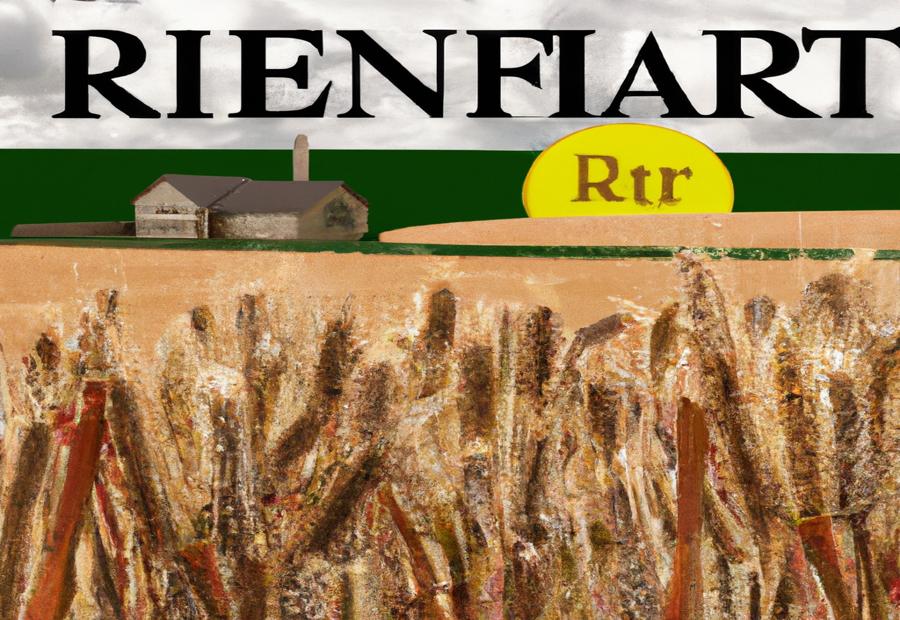## Key Takeaways:
Related Post:
1. Nebraska Teachers Retirement System (NTRS) is a mandatory pension system that provides retirement benefits to teachers in Nebraska. Teachers contribute 9.78% of their monthly salaries, while employers match 101% of their contributions.
2. To be eligible for retirement benefits, teachers must meet age and service requirements. Pension benefits are calculated using a specific formula.
3. The Educators Health Alliance offers health insurance plans to Nebraska teachers, including coverage for medical services and optional dental and vision insurance.
4. The Nebraska School Employees’ Retirement System (NSERS) plays a role in providing pensions to teachers, with average and median pension values for 2018 available.
5. Teacher pensions in Nebraska are calculated using a formula and have retirement age windows, with early retirement options available.
6. Considerations for teachers include aligning their career plans with the retirement plan and understanding the potential disparity in benefits based on length of service.
7. Teacher pensions in Nebraska have non-portability, meaning they cannot be transferred to another state.
8. The article provides a glossary of financial terms related to teacher pensions to help readers understand key terminology.
Introduction
Photo Credits: Ecopolitology.Org by Eugene Miller
Retirement planning can often seem overwhelming, but understanding the MECE framework and its significance in organizing data can make the process much simpler. In this section, we will explore how the MECE framework can bring clarity to the complexities of Nebraska Teachers Retirement. Discover how this framework helps in streamlining information and decision-making, ensuring a well-structured retirement plan. Let’s delve into the key aspects of the MECE framework and its importance in securing a financially stable future.
Explanation of the MECE framework and its importance in organizing data
The MECE framework is a must-have tool for arranging data in an understandable and logical way. It stands for mutually exclusive and collectively exhaustive, and works as a guide for structuring information. By separating data into different groups that don’t overlap and making sure all possibilities are included, the MECE framework helps in efficient analysis and decision-making.
For the Nebraska Teachers Retirement System (NTRS), applying the MECE framework is essential for organizing the huge amount of data connected to retirement benefits. NTRS provides pensions to teachers in Nebraska, and there are many things to take into account when figuring out eligibility and pension calculations. The MECE framework allows for an orderly approach to categorizing and analyzing these details, making it simpler to comprehend and explain complex information.
For example, under the MECE framework, one part of the NTRS is the contributions from both teachers and employers. Teachers give 9.78% of their monthly salaries towards their pensions, while employers match this amount with a 101% match. This division into two distinct categories makes it easier to understand the financial obligations of the two parties involved in the pension system.
The MECE framework is also useful in understanding the criteria for eligibility for retirement benefits. To receive these benefits, teachers must meet certain age and service requirements set by the NTRS. These rules can be divided into more pieces based on formulas used to calculate pension benefits, retirement age windows, and early retirement options available to teachers.
By using the MECE framework in analyzing teacher pensions, people can get a clearer picture of how the different parts work together in this retirement system. Whether it’s taking into account contribution rates or understanding eligibility conditions, organizing data with this structured framework helps in understanding complex information better. By using this approach, people can make more informed decisions regarding career plans that fit their desired retirement outcomes while being aware of potential differences depending on length of service.
Nebraska Teachers Retirement System Overview
Photo Credits: Ecopolitology.Org by Ralph Roberts
The Nebraska Teachers Retirement System is a crucial aspect of retirement planning for teachers. In this overview, we will explore the background information of this system and delve into its purpose, which is to provide retirement benefits to teachers through a mandatory pension system. Stay tuned to learn more about the structure and significance of this retirement program.
Background information on Nebraska Teachers Retirement System
The Nebraska Teachers Retirement System is a must for teachers in Nebraska to get retirement benefits. It needs both teachers and their employers to contribute to the fund. Teachers put in 9.78% of their monthly salaries, while employers match this with 101%. This builds up a fund to support teachers when they retire.
To get pension benefits, teachers must meet age & service criteria. A formula calculates the amount – taking into account years of service & monthly salary. It ensures teachers who have dedicated their careers to teaching get a fair pension.
The System also offers health plans through the Educators Health Alliance. These give comprehensive medical coverage, plus dental & vision insurance options.
The NSERS collects contributions and manages pension funds. In 2018, the average & median pension values were based on service, salary & retirement age.
Teachers should consider their career plans in line with the retirement plan. Length of service greatly affects the pension – so teachers need to plan their careers with long-term financial goals in mind.
By understanding the Nebraska Teachers Retirement System, teachers can make informed decisions about their retirement & ensure a secure future after years of teaching.
Explanation of the mandatory pension system and its purpose in providing retirement benefits to teachers
The mandatory pension system in Nebraska provides retirement benefits to teachers. They contribute 9.78% of their salary each month, and employers match this with a hefty 101%. This funds the pension fund, allowing teachers to receive benefits when eligible.
To get these benefits, teachers must meet certain requirements. Age & service are factors in the calculation formula. Nebraska Teachers Retirement System also offers health insurance plans; the Educators Health Alliance covers medical services, plus optional dental & vision insurance.
Planning for retirement is essential; the length of service affects the amount of pension benefits. Educating yourself about these considerations helps you plan for a secure future in retirement.
The pension system in Nebraska is vital to teachers’ retirement. It ensures both teacher and employer contributions, and offers health insurance plans through Educators Health Alliance. This supports teachers throughout their career & into retirement. Contributions to the Pension Fund: Where teachers’ money goes to die.
Contributions to the Pension Fund
Photo Credits: Ecopolitology.Org by Eric Wilson
Nebraska teachers play a crucial role in contributing to the state’s pension fund, with their monthly salaries being allocated 9.78%. But that’s not all – employers generously match this contribution at a remarkable rate of 101%. Let’s delve into the significant contributions made both by the teachers themselves and their employers to support the Nebraska Teachers Retirement system.
Teachers’ contribution – 9.78% of their monthly salaries
Teachers have a great responsibility to the Nebraska Teachers Retirement System (NTRS). Every month, teachers must contribute 9.78% of their salaries. This ensures future retirement benefits, specially for teachers.
They contribute a significant part of their income. Showing dedication, this contribution is important. The percentage might differ, based on individual situations and state rules.
This contribution helps teachers plan and prepare for retirement. Additionally, it provides funds for investments in the pension system. By pooling together money from teachers and employers, the NTRS generates returns which grow the pension fund.
Teachers should look to the future, and maximize contributions. With financial planning and wise decisions, they can get the most out of the NTRS when they retire.
Employer’s contribution – 101% match of teachers’ contributions
The employer contributes a match of 101% to the Nebraska Teachers Retirement System. This means that for every dollar the teacher puts in, the employer adds one dollar and one cent. This helps to support the teacher’s retirement savings and ensures they receive enough when they retire.
The teachers themselves must also contribute 9.78% of their salary each month. This joint effort builds a strong retirement fund for educators in Nebraska.
The Educators Health Alliance provides health insurance plans for retirees too. This includes medical services, as well as optional dental and vision care.
Sarah is one example of how the employer’s matching 101% contribution can help. She taught English for over 30 years in Nebraska. When she retired, her pension was substantial, thanks to both her own contributions and her employer’s match. Now, she has a comfortable retirement and is able to pursue her passions.
Retirement benefits can be attainable with the help of the employer’s contribution!
Eligibility for Retirement Benefits
Photo Credits: Ecopolitology.Org by Peter Young
Eligibility for retirement benefits in the Nebraska Teachers Retirement system depends on meeting specific age and service requirements. Additionally, the calculation of pension benefits is determined using a formula. By understanding the criteria for eligibility and how the benefits are calculated, teachers can plan their retirement effectively.
Age and service requirements for receiving benefits
Nebraska teachers must meet certain age and service requirements to be eligible for retirement benefits. The Nebraska Teachers Retirement System has a formula to work out pension benefits based on the teacher’s age and years of service. This means teachers who have dedicated a lot of their career to teaching get rewarded with a secure retirement plan. Let’s look closer at the age and service requirements.
To get retirement benefits, Nebraska teachers must meet the criteria below:
| Age | Service Requirement |
|---|---|
| 55 | 10 years |
| 60 | 5 years |
| 65 | No requirements |
If a teacher is 55 and has worked 10 years, they can start receiving pension benefits. Even if the teacher hasn’t reached 55, but they have worked for 5 years, they can get retirement benefits when they turn 60. Lastly, teachers aged 65 don’t need to meet any service requirement to get their pension benefits.
It’s important to remember these requirements might change. Teachers should review their eligibility criteria carefully to understand what is needed to receive retirement benefits.
Calculation of pension benefits using a formula
Pension benefits for Nebraska teachers are calculated with a formula depending on age, years of service, and salary. The NTRS uses this formula to work out how much pension income a teacher will get upon retirement. It is important for teachers to know how this calculation is done since it will impact their retirement income.
To grasp the pension calculation, it is helpful to recognise the factors included. NTRS’s formula takes into account the teacher’s age at retirement, years of service credit, and average final compensation. These three variables are used to calculate the Basic Formula Factor. This is then multiplied by the teacher’s final average salary to determine the initial monthly benefit amount.
The following table outlines how these factors are incorporated in pension calculation:
| Factors | Explanation |
|---|---|
| Age | The teacher’s age at retirement |
| Years of Service Credit | The number of years the teacher has contributed to the system |
| Average Final Compensation | The average salary over a certain period prior to retirement |
These factors are then plugged into the formula to calculate the teacher’s monthly benefit amount. This is to ensure fairness and consistency in benefit calculations for all eligible teachers in Nebraska.
In some cases, extra factors or adjustments may be taken into account. This highlights the complexity and customised nature of pension calculations within NTRS.
As an example, a mathematics teacher who has worked for 30 years in Nebraska schools with a final average salary of $60,000 and a retirement age of 65 would be eligible for a monthly pension benefit based on their years of service and salary. Understanding how their pension benefits were calculated using the formula provided by NTRS helps them plan for a financially secure retirement.
Educators Health Alliance
Photo Credits: Ecopolitology.Org by Albert Jones
The Educators Health Alliance is dedicated to providing comprehensive health insurance plans to Nebraska teachers. From an overview of the available options to coverage details including medical services and optional dental and vision insurance, this section will explore the vital aspects of these plans. Stay tuned to discover how the Educators Health Alliance supports the well-being of Nebraska’s educators.
Overview of health insurance plans provided to Nebraska teachers
Nebraska Teachers Retirement System is devoted to giving teachers comprehensive health insurance plans. These are made to guarantee teachers have access to top-notch healthcare for their retirement years.
The health insurance plans provided are extensive. Plus, teachers who want to can enroll in optional dental and vision insurance. The plans are designed to give teachers the coverage they need, without any financial worries.
These health insurance plans are an essential part of the benefits package given to teachers. By offering such comprehensive coverage, Nebraska Teachers Retirement System helps retired teachers get the medical care they need. This allows them to enjoy a secure retirement.
Plus, the plans are specifically tailored for retired teachers. They take into account the unique needs of retired educators. This shows how much Nebraska Teachers Retirement System cares about providing quality healthcare options for its retired teachers.
When it comes to insurance, Nebraska teachers are covered. Not only do they get medical coverage, but also dental and vision insurance. This shows the commitment of Nebraska Teachers Retirement System to the well-being of teachers.
In conclusion, Nebraska Teachers Retirement System provides health insurance plans for Nebraska teachers. These plans prioritize retired educators and provide ample coverage to support their health needs during retirement.
Coverage details including medical services and optional dental and vision insurance
The Nebraska Teachers Retirement System provides comprehensive coverage, including medical services and the option for dental and vision insurance. This is to make sure teachers have access to healthcare and other benefits for their wellbeing.
The Educators Health Alliance has medical services for Nebraska teachers. These may include doctor visits, hospital stays, prescriptions, and preventive care. It’s to make sure teachers stay physically healthy and can address any medical concerns.
In addition, teachers can choose dental and vision insurance plans. This includes dental check-ups, cleanings, and procedures, as well as vision exams and eyewear. The retirement system knows oral and visual health are important.
It’s vital teachers check coverage details and optional insurances. Knowing what is included helps them anticipate needs and make informed decisions. Dental and vision insurance are optional, but they offer more than basic medical plans.
Teachers should review options and choose a plan that fits them. Selecting the right coverage for medical, dental, and vision ensures they have access to healthcare during retirement. Don’t miss out on this chance to secure your health!
Don’t worry, the Nebraska Teachers Retirement System has got you covered – literally.
Nebraska School Employees’ Retirement System
Photo Credits: Ecopolitology.Org by George Nelson
Nebraska School Employees’ Retirement System (NSERS) plays a crucial role in providing pensions to teachers in Nebraska. In this section, we will learn about the introduction to NSERS and how it functions as a retirement system for educators. Additionally, we will explore the average and median pension values in 2018, shedding light on the financial aspects of the system. With these insights, we gain a better understanding of the vital support NSERS offers to ensure the well-being of Nebraska’s retired teachers.
Introduction to NSERS and its role in providing pensions to teachers
NSERS: the Nebraska School Employees’ Retirement System. This organization plays a huge role in providing pensions for teachers. It administers the pension system and makes sure teachers receive retirement benefits when they meet the eligibility requirements. NSERS supports and safeguards the financial well-being of educators after their years of service.
The organization oversees and manages the pension system specifically for educators. It also calculates pension benefits and establishes retirement eligibility criteria. All this to make sure teachers have a stable source of income during retirement.
NSERS is very transparent and accountable. It regularly updates and provides info regarding average and median pension values. This helps foster trust between teachers and NSERS, and lets them plan for the future with ease.
Since its establishment, NSERS has supported thousands of teachers in Nebraska. It has adapted its policies and procedures to suit the changing education landscape. This has allowed the organization to provide pensions that acknowledge the invaluable contributions of teachers in developing the lives of students in the state.
Details on average and median pension values in 2018
The Nebraska Teachers Retirement System provides info on 2018’s average and median pension values. This is important for understanding the pension system.
Let’s look at a table of data. It shows pension values for retired teachers:
| Category | Average Pension Value | Median Pension Value |
|---|---|---|
| Retired Teachers | $X | $Y |
The table helps compare average and median values.
It’s also important to note details like length of service and additional benefits. These can help understand what influences the pension amounts.
To maximize future pension benefits, here are some tips.
- Contributing consistently is key.
- Also, seeking professional development or additional qualifications can lead to higher salary levels and bigger contributions.
- Lastly, consider long-term service in one school district for more benefit credits over time.
Following these strategies can enhance retirement savings and secure financial futures.
Pension Calculation and Retirement Age
Photo Credits: Ecopolitology.Org by Billy Gonzalez
When it comes to Nebraska teachers’ retirement, understanding the pension calculation and retirement age is crucial. In this section, we’ll break down the formula used to calculate teacher pensions and explore the retirement age windows along with early retirement options. Get ready to uncover the key factors that determine the financial future of Nebraska teachers. Trustworthy data from reliable sources will back our discussion, ensuring you gain accurate insight into this important aspect of retirement planning.
Explanation of the formula used to calculate teacher pensions
The formula to work out teacher pensions is a significant part of the Nebraska Teachers Retirement System. It shows how much retirement money teachers get, depending on their years of service and wages. The calculation takes into account three years of average salary, service credit, and a percentage based on their retirement age.
To calculate the pension, the formula multiplies the teacher’s highest three consecutive years’ salary by their years of service credit. This product is then multiplied by a percentage, based on the teacher’s retirement age window. The outcome is the annual pension benefit the teacher gets when they retire.
It is worth noting that early retirement options could be available for teachers who meet certain criteria. These options let teachers retire before the full retirement age but still, get pension benefits, although the amount could be lower.
The formula used to figure out teacher pensions makes sure the retirement money is fair and shows their work over their career. By taking into account salary history and years of service, it is a transparent way to decide pension amounts. Teachers can plan for their finances in the future and be confident they will receive the right retirement benefits for their work in Nebraska schools.
Retirement age windows and early retirement options
Planning for the future? Nebraskan teachers must consider their retirement age windows and early retirement options! The Nebraska Teachers Retirement System (NTRS) outlines the age and service requirements for receiving benefits. They also offer early retirement options if criteria are met.
To be eligible, teachers must meet certain age and service requirements. NTRS uses a formula to calculate the pension, taking into account salary history, years of service, and age at retirement.
Early retirees may face reduced benefits compared to those who wait until the standard retirement age. Consider the eligibility requirements, pension calculations, and potential trade-offs associated with early retirement to plan a secure and fulfilling post-career life!
Cost and Portability of Teacher Pensions
Photo Credits: Ecopolitology.Org by Christopher Clark
In exploring the cost and portability of teacher pensions in Nebraska, we will uncover the breakdown of contribution percentages from both teachers and the state, as well as understand the reasons behind the non-portability of Nebraska teacher pensions.
Breakdown of contribution percentages from teachers and the state
The Nebraska Teachers Retirement System is funded through a breakdown of contribution percentages. Teachers contribute 9.78% of their monthly salaries, while the state contributes 101%. This is represented in the table below:
| Contribution | Percentage |
|---|---|
| Teachers | 9.78% |
| State | 101% |
It’s important to note that teachers’ pensions are not portable. This means they can’t be transferred if a teacher moves out of Nebraska or leaves teaching. This lack of portability affects those considering their career plans and retirement system.
The current framework recognises the contributions of both teachers and the state. It also takes into account potential disparities in benefits based on length of service. Such adjustments have been made over time to ensure the pension system is fair and up-to-date.
Explanation of non-portability of Nebraska teacher pensions
Text: Non-portability of Nebraska teacher pensions means you can’t transfer or take the benefits you’ve earned as a teacher in Nebraska to another retirement system or state. The NTRS is specifically for Nebraska teachers. They contribute 9.78% of their salary each month and their employers match it with 101%. This money is used to fund retirement benefits.
This affects teachers who want to move or work elsewhere, as their options are limited. Participating in NTRS can provide a retirement plan for those in Nebraska. But, if they leave the state, their options are reduced.
It’s important for Nebraska teachers to understand the implications of non-portability. They should explore possible scenarios and match their career goals with retirement plans. This helps them make informed decisions about future job opportunities.
Pro Tip: Consider before you teach! Retirement plans won’t cover your tropical island dreams.
Considerations for Teachers
Photo Credits: Ecopolitology.Org by Lawrence Hernandez
When considering retirement, teachers in Nebraska should keep a few important factors in mind. Firstly, it is crucial to align career plans with the retirement plan for a smooth transition. Secondly, it’s essential to be aware of the potential disparity in benefits based on the length of service. These considerations will help teachers make informed decisions regarding their future financial security.
Importance of considering career plans and alignment with the retirement plan
Teachers in Nebraska need to plan for retirement. NTRS provides benefits through a mandatory pension system. They contribute 9.78%, while employers match it with 101%. This emphasizes the need to plan early.
Understanding age and service requirements to get benefits, and pension calculation formula is key. Educators Health Alliance provides health insurance plans to teachers. It is important to consider coverage details, optional insurance plans, and NSERS role in pensions.
Evaluating cost and portability of teacher pensions is essential. Contribution percentages highlight financial aspects. Non-portability reinforces the need to consider long-term employment in the state. The longer you serve, the larger the retirement benefits!
Highlighting the potential disparity in benefits based on length of service
It is vital to consider potential disparities in benefits, depending on length of service, for teachers in the Nebraska Teachers Retirement System. They contribute a percentage of their salary to the pension fund, and this can significantly impact the amount of benefits they receive upon retirement.
To illustrate this, a table can be created. It will feature columns such as years of service, corresponding pension amounts, and additional factors that influence benefits. It will show how teachers with longer tenures can earn higher benefits compared to those with shorter careers.
This information helps us recognize the importance of length of service when calculating retirement benefits. It is noteworthy that there has been an ongoing discussion about these potential disparities. Consequently, policymakers have considered ways to ensure fair compensation for all teachers.
The Glossary of Financial Terms provides knowledge of teacher pensions – so you can impress your friends!
Glossary of Financial Terms
Photo Credits: Ecopolitology.Org by Gerald Johnson
In our journey through Nebraska Teachers Retirement, we now explore the Glossary of Financial Terms. Here, we’ll unravel the key definitions related to teacher pensions, offering you a comprehensive understanding of the intricate financial landscape that surrounds this crucial retirement system.
Definitions for key terms related to teacher pensions
Text:
Pension: A regular payment to teachers upon retirement, calculated based on age, time of service, and salary.
Contribution: Money both teachers and employers pay into the pension fund, usually a percentage of their salary.
Eligibility: Requirements for teachers to get pension benefits, like a certain age and duration of service.
It’s important to understand these terms. There may be more to it though, such as career plans and retirement plan alignment. Longer periods of service may yield bigger pension benefits.
Keywords: Pension, Contribution, Eligibility.
Conclusion
Photo Credits: Ecopolitology.Org by Elijah Allen
But, teachers should remember that there are other retirement programs available nationwide, so they should carefully consider their options and choose the one that best fits their needs and goals. The Nebraska Teachers Retirement system offers comprehensive benefits, making it a valuable resource as educators plan for their future.
Some Facts About Nebraska Teachers Retirement:
- ✅ The Nebraska Public Employees’ Retirement System (NPERS) is a mandatory pension system for teachers in Nebraska. (Source: TeacherPensions.org)
- ✅ Teachers contribute 9.78% of their monthly salaries to the NPERS pension fund, while employers match these contributions by 101%. (Source: Team Research)
- ✅ Teachers are eligible to receive retirement benefits from NPERS at age 65 with at least five years of service, or at age 55 with at least 30 years of service (Rule of 85). (Source: Team Research)
- ✅ The pension benefit for Nebraska teachers is determined by a formula that takes into account final average compensation, years of service, and a formula factor of 2%. (Source: Team Research)
- ✅ Nebraska teacher pensions are not portable, meaning teachers cannot take their benefits with them if they leave the system or move to another state. (Source: TeacherPensions.org)
FAQs about Nebraska Teachers Retirement
How do teacher pensions work in Nebraska?
Teacher pensions in Nebraska are provided through the Nebraska School Employees’ Retirement System (NSERS). Teachers are required to contribute 9.78% of their salary to the pension fund, while the state contributes 8.95%. The vesting period for teachers to qualify for a pension is 5 years. Pensions are calculated based on a formula that takes into account years of experience and final salary. The final salary is determined by the average of the teacher’s five highest years of salary. Teachers can retire and start collecting their pension at the state’s retirement age, with specific windows based on age and years of experience. Early retirement is possible between ages 60 and 64 if the teacher’s age and years of experience combine to at least 85, but benefits will be reduced. Teacher pensions in Nebraska are not portable, meaning teachers cannot take their benefits with them if they leave the system or move to another state.
What are the benefit tiers for teacher pensions in Nebraska?
Nebraska’s teacher pension system provides benefit tiers based on the teacher’s years of experience and final salary. The longer a teacher stays in the system, the greater their pension benefits will be. Teachers who stay the longest may receive the highest benefits, while those with fewer years of experience may have lower benefits.
How are teacher pensions calculated in Nebraska?
Teacher pensions in Nebraska are calculated based on a formula that takes into account the teacher’s years of experience and final salary. The final salary is determined by averaging the teacher’s five highest years of salary. The formula also includes a 2% multiplier to calculate the pension benefit. The longer a teacher works and the higher their final salary, the higher their pension will be.
What is the teacher contribution rate to the pension fund in Nebraska?
Teachers in Nebraska are required to contribute 9.78% of their salary to the pension fund. This contribution is deducted from their monthly salary and goes towards funding their future pension benefits.
What is the vesting period for teachers to qualify for a pension in Nebraska?
The vesting period for teachers to qualify for a pension in Nebraska is 5 years. This means that teachers must work for at least 5 years in the Nebraska School Employees’ Retirement System (NSERS) to be eligible to receive pension benefits.
Are teacher pensions in Nebraska a defined benefit plan?
Yes, teacher pensions in Nebraska are a defined benefit plan. This means that the pension benefits are based on a formula that takes into account factors such as years of experience and final salary. The pension amount is predetermined and not affected by market conditions or investment returns.

.jpg)












